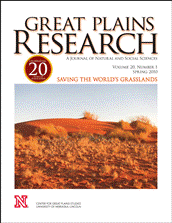Center for Great Plains Studies

Great Plains Research: A Journal of Natural and Social Sciences (through 2013)
Date of this Version
February 1994
Document Type
Article
Abstract
Mobility decisions and the effects of migration upon the quality of life of elderly people who had recently relocated to or within Brandon are assessed and compared with the responses ofa non-mover "control group." Although confirming many established results concerning the migration of the elderly, other conclusions also emerged. For instance, migrants and non-movers have a number of different social demographic characteristics, and their needs and desires appear to be quite dissimilar. Although non-movers appear apprehensive about the future, many movers see positive outcomes, in terms of life satisfaction, resulting from their migration. The research also raises the question of whether contemporary service and support patterns are appropriate for the people who need them. If these elderly are not to be “forced" or "imposed upon" to move, then different policies must be enacted that build more distinct and creative support systems.


Comments
Published in Great Plains Research 4:1 (February 1994). Copyright © 1994 The Center for Great Plains Studies, University of Nebraska–Lincoln. Used by permission. http://www.unl.edu/plains/publications/GPR/gpr.shtml